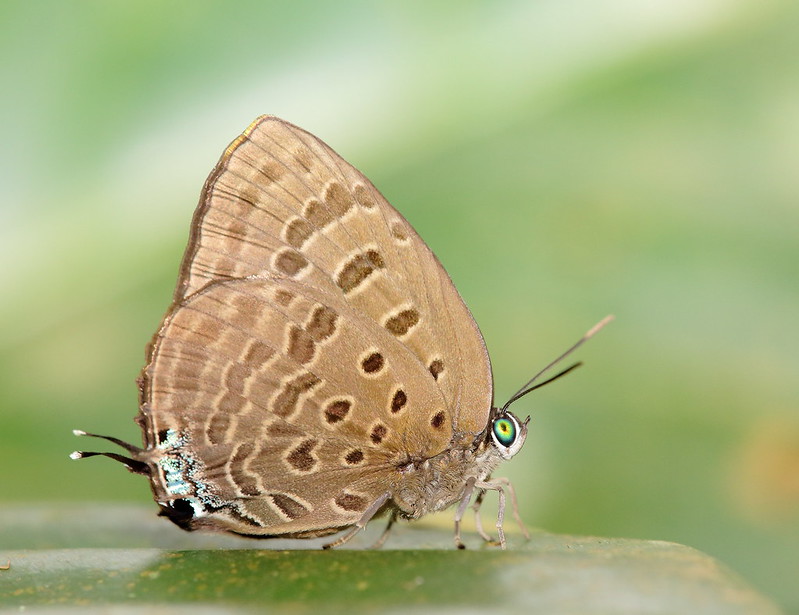Need help for the ID, thanks!

Need help for the ID, thanks!

Cher Hern
I presumed this about the size of A. major. ie rather smaller than A. athada.
The forewing have spot 9 (uppermost) of the band shifted inwards.
Spot 6 on the hindwing is wider at the top.
It should be Arhopala sublustris.
There is some variation in the shape of spot 6.
Others in the alea subgroup of the cleander group(recorded in Singapore) can be eliminated thus.
Spot 6 quadrate A. phanda. A. normani (submg. & postdiscal band on hindwing always close.)
Forewing termen rounded, spot 6 almost triangular, A. aroa.
A. milleri probably impossible to separate except looking at the upper.
However in valid examples forewing spot 9 not shifted in.
TL Seow
I have few questions about this specimen:
The photo shows the following differences when compare to illustrations from Fleming (L211B), C&P 4 (Pl 67 fig. 10) and also D'Abrera (page 567):
1. Hindwing underside: spot in space 6 not wider on top. How often the variations occur?
2. Hindwing: dorsum not straight as figured by the above references.
3. Hindwing underside: cell end bar not touching the spot in space 6.
4. Forewing underside: post discal spot in space 5 dislocated.
The actual size of the specimen is not measured and also the upperside colour not examined. I suggest id as Arhopala ?var. sublustris.
Teo T P
I will like to comment on the above.
1 Spot 6 is definitely wider at the top (towards the costa in the set position ) than at the bottom.
2. Hindwing dorsum have no bearing on ID & is more or less straight.
3. Whether the cell -end bar touches spot 6 is immaterial.
4. I supposed you meant the spot in space 3 (lowermost) which is shifted in.
This is a sticking point as it is most obvious in A. athada, (cleander subgroup) than in most members of the alea subgroup.
I did say it should be A. sublustris on the assumption it is the size of A. major.I did not say it is.
Still you are right that a question mark is indicated here.
Thus the ID is ? Arhopala sublustris ( or Arhopala ?sublustris ).
TL Seow
Last edited by Psyche; 04-Sep-2012 at 01:17 PM.
Thanks Dr Seow and Mr Teo for the clarification and suggested ID.
Cher Hern
Did a recheck. This is Arhopala athada.
If spot 6 is wide enough to bridge the spot 5-cellend gap (touched both spots) and the forewing is distinctly dislocated, it is athada.
Spot 9(uppermost) of the forewing band may also be shifted in A. athada.
TL Seow
That's great! Thanks Dr Seow and Mr Teo for the ID!
Yano San, you should also have a plus, it's Arhopala athada!
Cher Hern
Thanks for the confirmation, Teo.
The problem was spot 6 & 7 are not the straight-sided spots described in the key for athada and spot 9 on the forewing is normally not shifted so inwards.
In any case A. athada is twice the size of A. sublustris.
Most everyone will quickly note if the butterfly is rather small( ie if it had been A. sublutris).
TL Seow